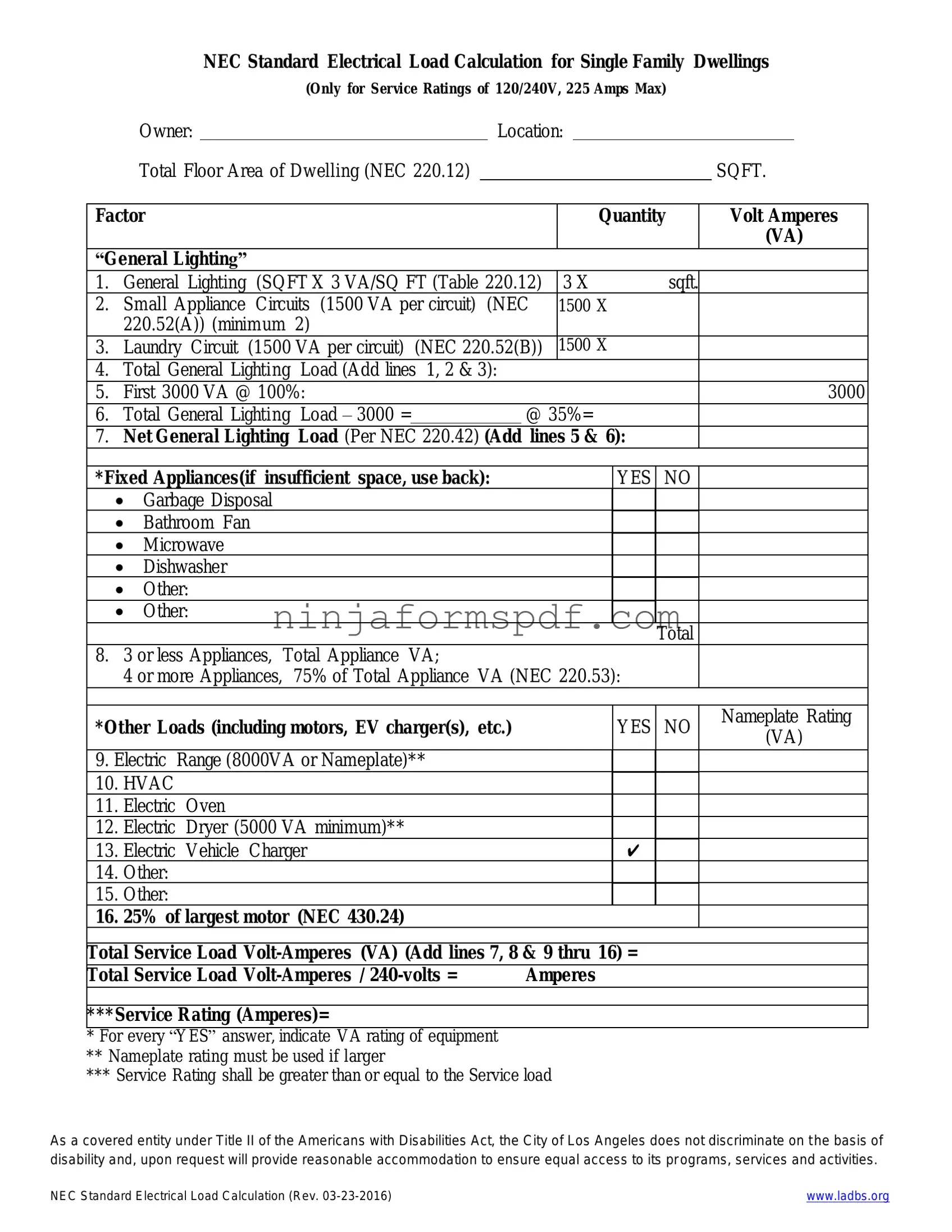The Residential Building Permit Application closely resembles the LADBS NEC Standard Electrical Load Calculation form. Both documents are essential for regulatory compliance in residential construction and renovation projects. The Residential Building Permit Application is used to obtain permission before starting construction, while the LADBS form is specifically focused on ensuring electrical systems meet the National Electrical Code (NEC) standards. Each form gathers detailed information about the project, including owner information, project location, and specific technical details, ensuring that projects comply with safety and building codes.
An HVAC Load Calculation Worksheet is another document similar to the LADBS NEC Standard Electrical Load Calculation form. This worksheet is designed to determine the heating and cooling needs of a building, ensuring that HVAC systems are properly sized and installed in accordance with relevant codes and standards. Similar to the LADBS form, the HVAC Load Calculation Worksheet collects specific details about the building's structure, such as square footage, window types, and insulation levels. Both forms play a crucial role in ensuring energy efficiency and compliance with local and national standards.
The Electrical Permit Application shares similarities with the LADBS NEC Standard Electrical Load Calculation form. It's used by electricians and contractors to get authorization for electrical work, including installations, upgrades, and repairs. Like the LADBS form, the Electrical Permit Application requires detailed information about the electrical project, such as the scope of work, project location, and contractor details. Both documents ensure that electrical work is performed safely, adhering to the NEC and other relevant codes.
A Plumbing Permit Application is akin to the LADBS NEC Standard Electrical Load Calculation form in its purpose and content. This application is necessary for any plumbing work, including new installations, modifications, or repairs, ensuring that all plumbing projects meet local building and plumbing codes. Similar to the LADBS form, the Plumbing Permit Application requires detailed project information, including the project's scope, owner information, and contractor details. Both documents are critical in maintaining the health, safety, and welfare of the public by ensuring all work is code-compliant.
Finally, the Fire Safety System Design Submission is another document that parallels the LADBS NEC Standard Electrical Load Calculation form. This submission is critical for projects that involve the installation or modification of fire safety systems, including sprinklers and alarms. It ensures that these systems are designed and installed following local fire safety codes and standards. Like the LADBS form, the Fire Safety System Design Submission requires detailed information about the project, including technical specifications and system designs. Both documents contribute significantly to public safety by ensuring that essential systems are properly designed and installed.

